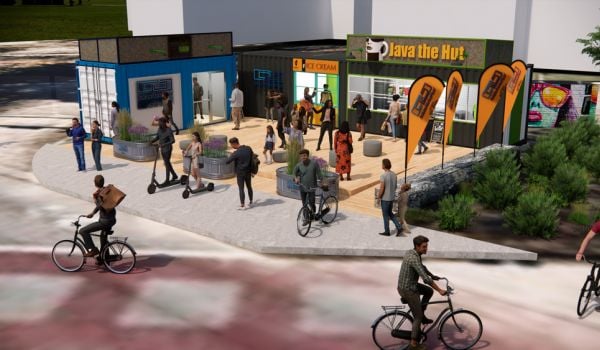If there were a magazine list for Top Ten Silliest Magazine Lists, then Marie Claire’s “sexiest city” ranking would have to be near the top. Milwaukee won top honors for this prestigious distinction in 2008. Not New York, Los Angeles, Paris or Milan, but Milwaukee. That should tell you something about the ranking’s methodology. That is, there probably was no methodology.
Of course, no one (I hope) takes these magazine city rankings seriously. No matter how much data analysis supposedly goes into these lists, when you’re parsing the numbers to the point of concluding that Naperville, Illinois is a better place to live than Plymouth, Minnesota, there’s bound to be some subjectivity thrown into the mix, to say the least.
What do these lists tell us, aside from the fact that Miami Beach is the best place to party? They tell us that we want our cities to reflect our hopes and aspirations. We want to be green and environmentally friendly, so we want to know if our city is green and environmentally friendly. We want to be fit, so we want to know if our city is fit. And so on.
These days, as the economic outlook of our nation looks ever more grim, we want to be sexy and hip, and in a stable job. So, naturally, we now want to know if our city is a good place for a stable job. Hence Forbes’ most recent list, Ten Cities for Job Growth in 2009. This list, unlike most, has a relatively transparent ranking methodology: cities were ranked by their 2008 unemployment rates, growth in new jobs over the last year, and “other evidence” gathered by “offices around the country.”
Reading through this list was encouraging for me, since my city, Milwaukee, is apparently the 5th best city for stable employment. If, for whatever reason, I lose my job, I could easily move an hour and half down the road to Madison, Wisconsin, the state’s capital, home of my alma mater, and the number one city on the list.
Wisconsinites weren’t surprised that Madison made the top of this list. We know that Madison is basically tailor-made for these kinds of “best city” lists. With a metropolitan population of only a half million, the city is home to one of the largest universities in the country, and is the seat of state government. So the town has a much higher-than-average percentage of college graduates, government jobs and income. And Madison, chosen as the state’s capital due to its picturesque location on an isthmus between two large lakes, looks like it could have stepped right out of the tourist brochures for Pleasantville. It’s the picture postcard for the nation’s idyllic Midwestern dreams. It offers the ease of suburban living with enough college-town “diversity” to trick you into thinking you’re in a real city.
So it wasn’t surprising to see a university/government town like Madison on the list. But Milwaukee came in at #5, Baltimore at #6 and Pittsburgh at #7. Milwaukee? Baltimore? Pittsburgh? Aren’t these supposed to be dying former industrial cities, shadows of their former selves?
Yes and no. Milwaukee, like Pittsburgh and Baltimore, is not the factory town of old. The 21st Century Milwaukeean is as likely, if not more likely, to work in a bank rather than a brewery, in the field of finance rather than forging.
You probably don’t know this about Milwaukee, because we don’t convey the image of rapid growth and expansion. We’re not a boom town, like Atlanta or Seattle. We’re straight-laced and conservative, so when the good times are rolling, we don’t roll as fast as everyone else. The flip side of this slow-growth, pay-as-you-go culture is that when economic times are tough, we don’t fall as rapidly as other places. We don’t boom, which means we don’t go bust.
So Milwaukee is evolving, not booming, from Brew City to New City. This bodes well for those of us looking for gainful employment in stable industries. Wisconsin’s unemployment rate is usually well below the national average. To borrow a word oft used by Wall Street analysts these days, Wisconsin’s economy is simply less “volatile” than that of our friends on the coasts.
But, as is often the case with these magazine rankings, Forbes overlooks one crucial piece of information that might sully Milwaukee’s, Baltimore’s and Pittsburgh’s rosy picture: the fact that the unemployment rate doesn’t count everyone that is jobless.
While Milwaukee’s official unemployment rate is lower than the national average, this number only counts those actively looking for work, not those who have stopped looking or have dropped out of the labor force entirely. In Milwaukee, as in many other post-industrial cities, this means that those with little education and no skills, those who generations ago would have supported their families in a factory, are no longer in the labor force. They survive off the books, under the radar, and uncounted by the usual statistics of economic vitality.
Milwaukee is a blueish-white collar city where a huge percentage of its blue collar workers no longer work. The city’s economy has evolved beyond the current reach of a lot of its citizens.
And if we looked at many of this decade’s boom cities beyond the usual metrics, we may find a similar picture. This is something we should all keep in mind as we think about recovery in 2009 and beyond.















